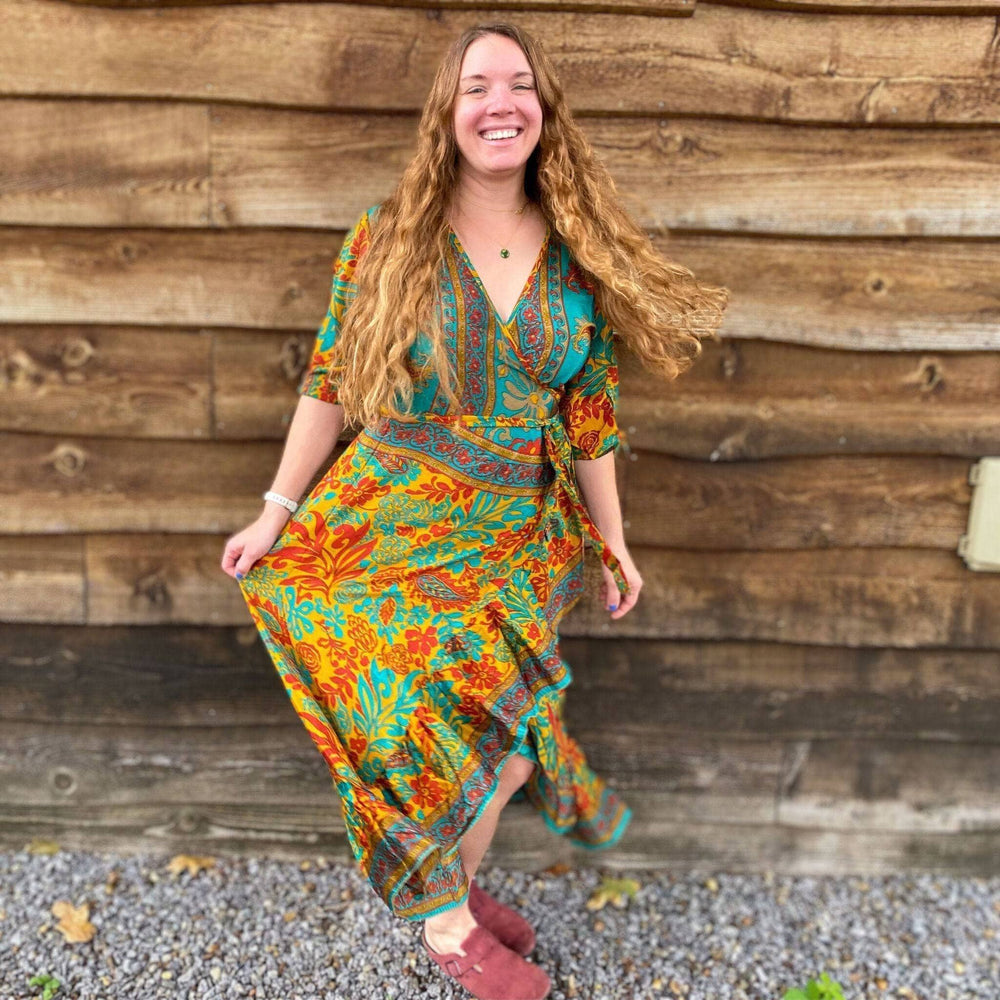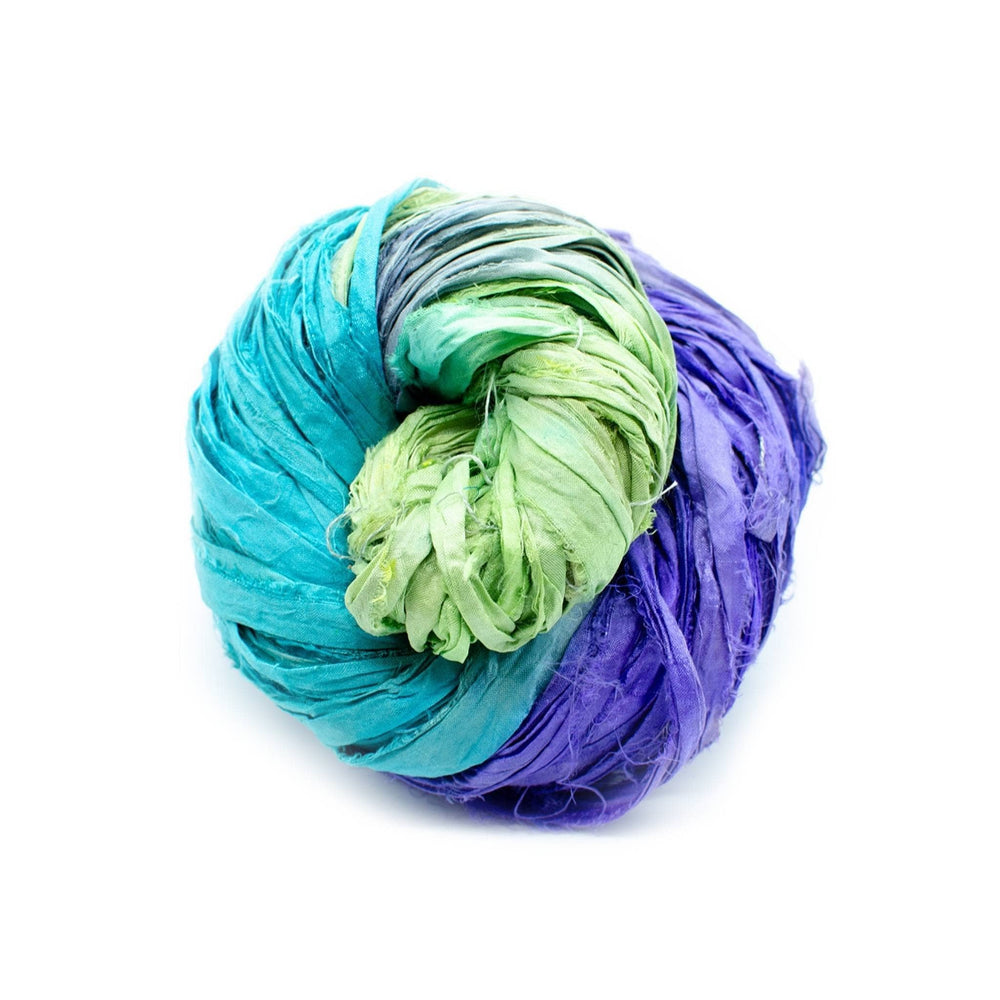South Asia has a long and rich history filled with culture, prosperity, and creativity. It is one of the world's oldest cultures (Harappan Civilization being the first recorded) and human habitation has been found on the subcontinent as far back as 250,000 years ago.
But India as we know it has only been a country since 1948.
Whaaaaat?
The reason: British Colonization/Conquest and Imperialism. The legacy of this colonial rule still impacts India today. The artisans responsible for the products you enjoy face daily challenges that have direct roots in British colonialism. Supporting them and their craftsmanship helps dismantle colonial oppression. So let’s learn about the specifics of colonization, how our artisans are affected, and what you can do to help.
South Asia Before Colonization
South Asia as a whole has always been diverse; having many unique cultures, dynasties, and countries through the last 8,000 years since the Neolithic Revolution. These civilizations are extremely powerful in wealth, the arts, and in war. The Maurya, Gupta, Delhi Sultanate, and Mughal empires were just the big ones. Hundreds of Hindu, Jain, Sihk, and Islamic kingdoms decorated the subcontinent like a diverse tapestry. Before the British came, the people living within these empires benefitted from the Indian Ocean trade network. Indians collected the raw materials abundant in their land like cotton and indigo, and produced beautiful textiles for sale on these trade routes. These regions were self sufficient and generated wealth for the people. The literacy rate in South Asia before British contact was very high, some estimated it to be 90%. The art from this successful era of South Asian civilization can still be spotted on many of our sari skirts.

British Colonization 1612 - 1945
The first instance of British colonization in South Asia was in 1612, when The East India Company began to exploit the continent and it's people. Queen Elizabeth I gave permission to the company to settle in India in an effort to break the Dutch trade monopoly in the Indian Ocean. This British-owned corporation proceeded to treat the Punjab, Marathi, Bengal, Tamils, and Pashtun regions like bottomless warehouses. Corporate control of India defined the next few centuries of exploitation in the subcontinent. The British were only interested in the raw materials, food, and luxuries that could be brought back to strengthen their empire while robbing South Asia.
Imagine if Walmart took over South America. That's what happened to India.

South Asia continued to be 'owned' by British companies until 1858, when it was conquered by...Britain. Things did not improve much. The life expectancy of South Asians living within the British colony dropped by a whole fifth from 1870-1920. Since then, South Asians fought in two world wars for Britain (at great costs) in hopes for their freedom from colonial rule.
Resistance During the Era of Colonialism
South Asians from all over did not just sit idly by and let this happen. There were literally hundreds of resistance movements, large and small, that fought for liberation. From Jhansi ki Rani to Mangal Pandey, men and women both equally fought against racism and sectarianism imposed upon them by their colonizers.
Other than violent revolution, a major form of rebellion against the British corporation was a boycott of British goods. South Asians began to focus their energy on creating self-sufficient businesses. More on that later...

Here’s some of the strategies used by the British for centuries which contributed to long term social and economic issues in India.
Dehumanization and Biased History. It is reported that there are more ancient South Asian artifacts in British museums than there are currently in India. The British colonizers profited off of the rich culture of South Asia. A big part of British Imperialism is the racist dehumanization of Indian history. The way that it is taught in schools in the west today still says that India was dependent on the British Empire.Typically, what is learned about India in the Western world is inherently biased against South Asia. For example, those two resistance fighters I mentioned above led an armed revolution that spanned dozens of provinces against the British East India Company back in 1857. Indian's refer to this as their first modern revolution. Textbooks in the United States and Britain refer to this very important event as a "Sepoy [military] Mutiny." Imagine calling the US revolution a “tiny squabble with a few angry soldiers.” South Asians suffered horrifically under British colonization. Forced poverty, disease, famines, and cultural and economic upheaval have traumatized the South Asian experience, even up to today.
The British exploited South Asia in every way humanly possible, and created a sense of social and racial inferiority towards the indigenous people. This manufactured sense of racial superiority was “justified” by racist stereotypes. This is very true in the material culture, arts, and education of the time. Even after independence, some of these troubling racist stereotypes of Indians exist. One Houston Texas student of South Asian descent responded to a survey about some of the troubling stereotypes: “Wars, disease, population, Gandhi, Mother Theresa, female infanticide, flooding, and starvation; India was only thought of as a third world country—considered inferior and totally ignorant of world events. The economic backwardness of India blamed on the superstitious and polytheistic nature of Hinduism.” These stereotypes are very hurtful, and stem from a colonial policy of dehumanization to legitimize British rule over South Asia.
Divide and Conquer: The British saw South Asia and instead of seeing the many cultures as something to be cherished and respected, they saw it as something to be plundered. In fact, this diversity was weaponized by the English. Through divide and conquer strategies, the British East India Company played up old medieval rivalries between Hindus and Muslims, leading to centuries of damage and mistrust by the time of independence. India as we know it gained independence from Britain on August 15th, 1947. The British 'helped' create new countries via religious borders (In fact, the man who drew the border Sir Cyril Radcliffe never set foot in India before he was tasked with the job!). The contested drawing of the border caused the creation and division between India and Pakistan. The splitting of borders, racial, and cultural upheaval rocked the new country for decades.
Outlawing Education: Before British rule, very few South Asians struggled with access to education. In fact, the Islamic Empires at the time were world renowned in science, math, and art. Targeting education prevented South Asians from advancing up the economic, social, and political ladder and it caused widespread illiteracy and dependence on the English for education. This education of course benefited the colonizer’s point of view rather than the South Asian perspective. By the time India was granted its independence, only 10% of the population could read and write. Since independence in 1947, literacy slowly began to rise. However, lack of adequate education and illiteracy is still a problem in India. Supporting DGY and buying products produced by our artisans is a method of combating this harmful legacy of imperialism.
Dictatorship: Ironically, the British monarchy who protested tyranny, ruled India as a dictatorship. The “Bengal Regulation III” of 1818 called for the immediate arrest of any individual in the colony who threatened “public order” without a trial. It later evolved into the 1919 Rowlatt Act. Those arrested without trial were not allowed to know who accused them, or to know the evidence used to detain them. A month after this law was passed, protesters peacefully assembled in Amritsar India, at a place called Jallianwala Bagh. Colonial forces (who were fresh from leaving the trenches of World War I) open fired, murdering 379 people and wounding over 1,500.
Artisans who make your yarn and sari skirts have family members who remember stories of this era. One shared their family's experience: "When British soldiers were seen patrolling a street, everyone on the road would run into nearby homes. People would leave their doors unlocked so that anyone looking to hide from British soldiers were able to come inside."
Some of the artisans have relatives who were arrested without trial for protesting. Even to this day, India still struggles with authoritarianism. The National Security Act has been used by Prime Minister Modi to detain any activists protesting the oppressive regime of the current BJP party. Those arrested cannot seek help from legal counsel. Ajit Kumar Doval is currently India’s National Security advisor, and under his rule many activists that criticize the government’s crackdown on Muslims and lower caste peoples have been detained. The mechanisms of the colonial government are still used and abused in India to silence any minority groups.
Monopolizing India: India wasn’t called the “Crown Jewel of Queen Victoria’s empire” for nothing. South Asia was and still is very rich in natural resources. It is suggested that between 1765 to 1938, over $45 trillion was plundered from India by the British in the form of money, human lives, luxuries, raw materials, livestock, produce, and art. South Asians were forced to extract their own raw materials like “blue gold” (which is indigo and is used by our artisans to dye yarn). South Asians were barred from producing their own goods. Instead, the resources were sent to British factories. Thousands of British people benefited from getting jobs in factories producing goods like textiles made from Indian resources.
Get this: The British then sold the finished products to Indians, and flooded the market so only British goods were available.
Crops were taken from starving farmers. In 19th century Bengal, many farmers were forced to grow opium instead of food....OPIUM! Talk about drug trafficking! This resulted in a famine that killed millions. The Opium that was forcefully grown in Bengal by these starving farmers was used to disrupt Chinese wealth in the 19th century.
We've seen some articles about how "life was better in India under British colonization" and how "the British did some helpful things for India". Some of this rhetoric is taught in US and British schools. The usual topics that are brought up in these articles are political unification, laws, democracy, railways, language, and infrastructures like hospitals and schools.
Imagine someone broke into your home. They ate your food, stole your money, took away your sense of identity and turned you against your other family members.
Then when this intruder finally leaves, they say to you: "I built you a shed and did some laundry, you're welcome! :)"
British colonization did nothing positive for India.
For example: about an hour and a half away from our Bangalore co-op is a gold mine that was operational during the era of colonization. The British built a long railroad track to the coast so that the gold from that mine could be easily traded. How nice right? This is what many western schools may cite as a “positive benefit” of imperialism. However, it was not for the benefit of India, as the British used that mine to work people into exhaustion and then steal the gold that they mined and shipped it back to England.
The Impacts British Colonization Has On Our Artisans Today.
Many of our artisans recall stories from their parents and grandparents about the brutality they faced and about the resistance and civil disobedience that they took part in. In particular, many Indians and Pakistanis can recall instances of generational trauma from the violent colonial partition of India in 1947. The children that lived through this genocide are now adults that are no longer afraid of sharing their stories.
Education. A major problem that directly impacts our artisans in India today is access to education. With a lack of education there was no opportunity to get better work opportunities. After independence, many government leaders did not take interest in education, because citizens were dependent on getting jobs in manual labor. This is still a big problem.
In India, there are two options for schooling: Government school (public) and private school. Government schools are severely underfunded because there is a very powerful lobby for private schooling in the country. In 2010 the government promoted the Right to Education Act. This act stats that no matter what social class, the government would pay tuition for the private education of children. This was a great policy that helped Indians overcome generational poverty from the era of colonialism. After lobbying from the private school industry in 2018, the government said that the Right to Education Act only applies to areas where there are no government schools. Government schools are located in most Indian towns and cities, so the Right to Education Act no longer ensures equitable access to quality education for all children. The generational poverty from colonialism still stands as a major obstacle to attaining a quality education.
There are many instances where students drop out. Quality education is very difficult to come by if one does not have the money for tuition. Our artisan community falls under this category. For example, in Bangalore, government school teachers are only paid $100 a month by the state. Also, only certified teachers are allowed to teach at government schools and with pay that low, communities struggle to find teachers. Some members of our co-op and other community leaders teach classes themselves in government schools, and run “Go Back to School” festivals to entice students to go to school. With underfunded schools, many children of our artisans do not have the same opportunities as their peers who can afford the high tuition at private schools. Generational poverty from the era of colonialism forces many of our artisans to send their children to government schools.
Quality of education for our artisan’s children is still a MAJOR concern. In Bangalore, some government schools were funded by the Bangalore International Airport. In many cases, funding for quality education comes directly from profits made by selling yarn, sari skirts, and other artisan made items. Lack of education is a specific tactic used by Britain to prevent South Asians from advancing economically. We at DGY work hard to help our artisans overcome generational poverty caused by British colonialism. We also work to provide fair access to education for our artisans and their families. This is possible with every skein of yarn you purchase.
How You Can Support The Artisans and Their Fight Against The Legacies of Colonialism:
There is a form of resistance to colonialism that YOU directly support when you buy DGY products.
Remember how the British made money off of their colony? Britain took resources away from South Asians and produced British made goods in British factories. Like any greedy corporation, British colonialism monopolized businesses and prevented any similar businesses from happening in India. It created a dependency which forced South Asians to work for Britain and buy from Britain. The wealth went only to Britain and not to the South Asian people.

Historically, revolutionary Indians like Gandhi and Nehru called for Indians to boycott these British corporate goods. Instead, Indians made their own clothing. To this day, our artisans are still participating in an anti-colonial/anti-corporate operation. The yarn and sari skirts they produce are all done on their own. There is no corporation involved in the production, manufacturing, and distribution of the hand made goods produced by our artisans.
One of our co-op leaders said that the quality work our artisans do is a legacy of resistance to colonialism. It’s like the Boston Tea Party, but BETTER. Self-sufficiency is what broke colonial rule in India. It is empowering. Self-sufficiency smashes the harmful stereotypes against South Asians. Therefore, supporting our artisans through DGY is a way you as a consumer can combat colonialism and its harmful legacies!
Your support can continue to support the artisan’s anti-colonial/anti-corporate activities. More importantly, it also helps our artisans send their children to local private schools for quality education.
The Resiliency of South Asia
India is as powerful as it is today because Indian's persevered and survived trauma that most people nowadays can't bear to think about. Resistance, faith, and strength of the Indian people is what brought the country to where it is today. All of those western Enlightenment ideals of freedom and liberty were probably best demonstrated by South Asians and other colonized people who fought for liberation from racism and tyranny.

We are so happy that our blog series has been as accepted as it has! We will continue these blogs to share the lives of our artisans with you and how you supporting us at Darn Good Yarn helps you grow as a global citizen.
-Kate & Dan Curry
 Rewards
Rewards






















